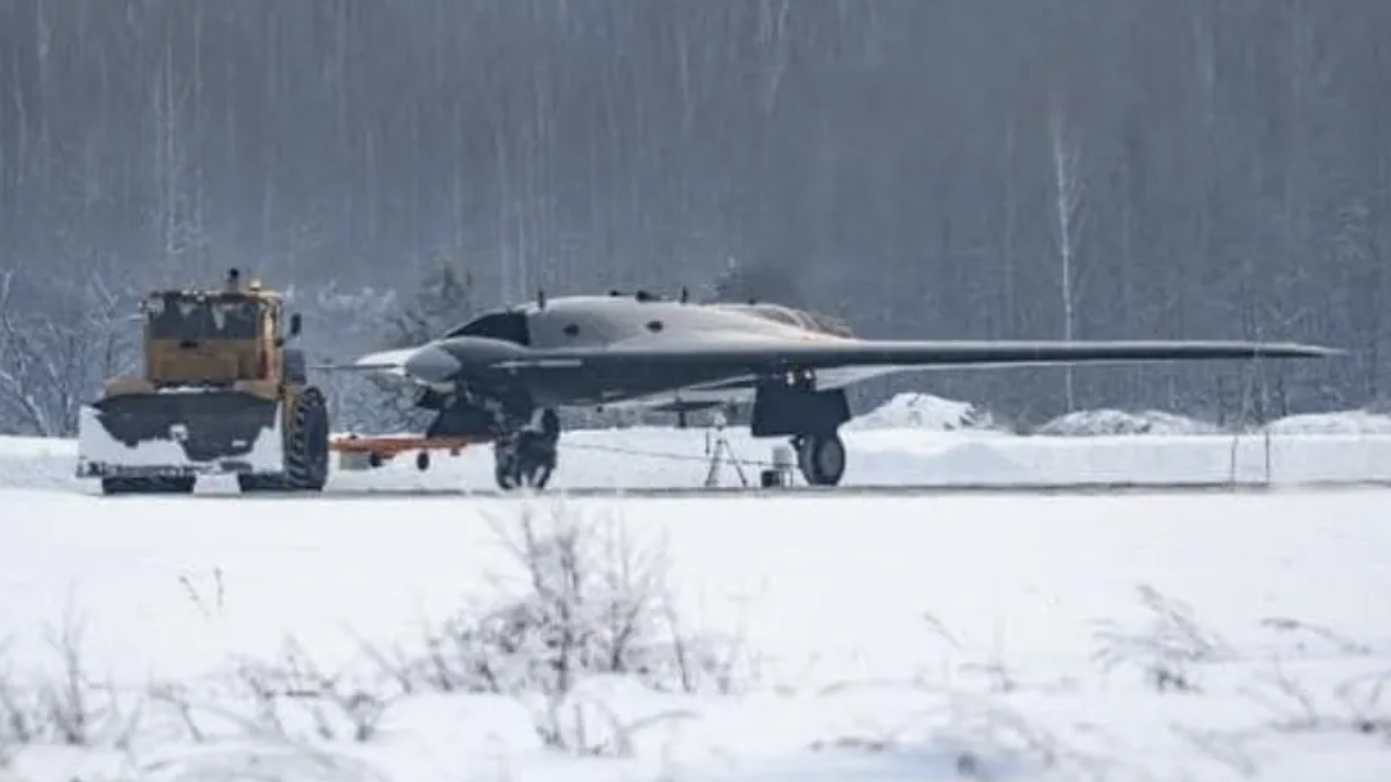The General Director of Russia’s United Aircraft Corporation, Yury Slyusar, has said that the company will begin deliveries of the S-70 Okhotnik unmanned combat air vehicle to the Russian military in 2024. The move follows calls from the defense ministry to accelerate work on the heavy combat drone program — the first of its kind in Russia.
The Kremlin first revealed this new delivery timeline on Aug. 3, 2020. Previously, Russian Deputy Prime Minister Yuri Borisov had said the S-70 would begin tests in an armed configuration between 2023 and 2024, before the launch of series production in 2025.
Slyusar described the Okhotnik, meaning Hunter in Russian, as an “attack heavy drone [sic] with unprecedented capabilities, having the largest combat flight range, the widest range of weapons [and] the broadest range of equipment.”
The flying wing unmanned combat air vehicle (UCAV) is being developed under the Udarno-Razvedyvatelnyi Bespilotnyi Kompleks (URBK), or Strike-Reconnaissance Unmanned Complex, program with Sukhoi as the project lead. The Russian Defense Ministry reportedly ordered the design bureau to begin the development and construction of the Okhotnik prototype in October 2011.

The jet-powered UCAV first broke cover in January last year, when the first photos were posted to social media. Prior to this, an unnamed Russian ministry source told state-run news outlet TASS that the prototype had completed initial ground tests at the Novosibirsk Aircraft Production Association’s plant — the first photos were apparently taken during this phase.
The Russian Ministry of Defense then officially announced the S-70’s maiden flight in August last year, stating that the UCAV had flown for more than 20 minutes, cruising at an altitude of around 1,970 feet. The location of the Aug. 3, 2019, flight test was not announced, but it’s thought to have taken place at the 929th Chkalov State Flight-Test Center in Russia’s southwestern Astrakhan region.
Once in service, it’s expected that the Okhotnik will be capable of operating in a manned-unmanned teaming set-up, with the UCAVs acting as “loyal wingmen” to Su-57s and potentially other aircraft. And, as The War Zone has previously explored, the drone might help overcome known deficiencies in the Su-57 design, which you can read more about here.

The Okhotnik was first seen flying together with a Su-57 last September, when the Russian Defense Ministry released video footage apparently taken at the 929th Chkalov State Flight-Test Center. In a related statement, the defense ministry said the S-70 will “broaden the fighter’s radar coverage and provide target acquisition for employing air-launched weapons.” This suggests that Russia intends to use the Okhotnik to cue very long-range weapons against air and ground targets on behalf of the Su-57, keeping the manned fighter further away from enemy air defenses and hostile fighters.
Moscow’s plans to put a UCAV, especially one that may have some stealthy characteristics, into frontline service by 2024 are certainly ambitious. To put it in context, the next-generation Su-57 was first flown in prototype T-50 form in January 2010 and is still yet to enter frontline service. To date, the Kremlin has only ordered 76 production-standard Su-57s.
Russia also has first-hand experience of the difficulties inherent in bringing a complex drone into service. On Nov. 16, 2019, it lost an Orion medium-altitude, long-endurance UAV in a crash near Ryazan. A first production Orion had been scheduled for delivery to a frontline military unit at the end of the same year. Finally, manufacturer Kronshtadt officially handed over the first three examples in April this year. At the same time, however, the defense ministry confirmed that it required further upgrades to the system before it would be formally accepted for service.

It may well also be the case that the Okhotnik requires more refinements before it’s a truly combat-capable platform. As The War Zone pointed out in its earlier analysis of the drone, which you can find here and here, there remain questions about the UCAV’s stealth features, at least in its initial configuration. In August 2019, at the biennial MAKS airshow outside Moscow, Sukhoi displayed a model of an S-70 with a significantly revised and far stealthier engine and exhaust configuration as compared to the flying prototype. You can read The War Zone’s full analysis of this proposed updated design here.
Whatever the future holds for the Okhotnik, it’s clear that, for the time being at least, Russian defense planners are keen to get it into service as soon as possible.
Contact the author: thomas@thedrive.com
